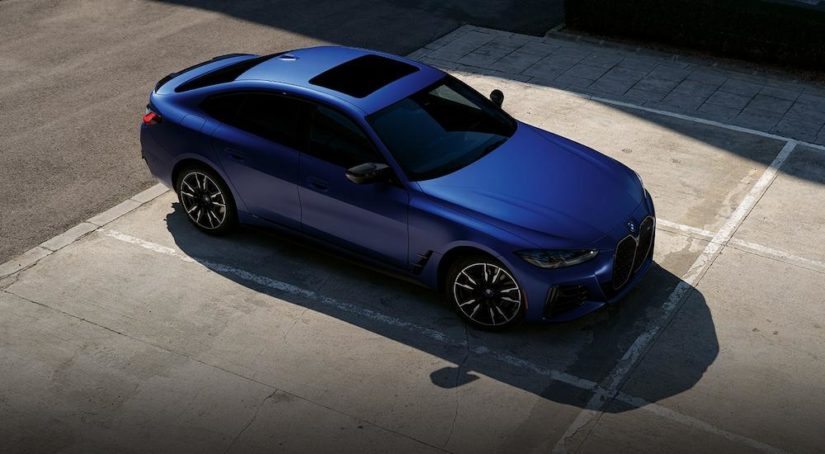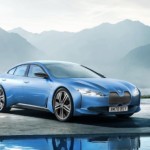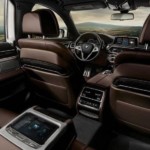The ascent of electric vehicles has presented a multifaceted challenge to automakers––do they create something completely unique or make it look familiar? Do they embrace the dynamics inherent to EV design or strive to replicate the handling of a gasoline car? What do they do about the profound silence inherent to EV operation?
BMW i4 dealers probably feel they have the optimal answer to those questions. BMW’s relationship with EVs is a bit of a strange one––the i3 and i8 were showcases of technology, not capability, and the completely unique iX shares little with its stablemates. The i4, on the other hand, is deceptively familiar––it’s a direct adaptation of the well-established gas-powered 4 Series Gran Coupe. The i4 M50 is also BMW’s first electric M car, claiming a significant landmark within the Ultimate Driving Machine legacy, and as for the sound, well…for now, let’s just say they left it to the pros, alright?
Reviews are mixed, but professional car critics are usually biased toward sports cars and more concerned with suspension mechanics than the infotainment system. Today, I’ll leave the performance stuff to performance people and instead focus on highlighting key features that come into play on every drive, every day. That means examining the EV experience, comfort-oriented features, advanced driver assist technologies, and state-of-the-art connectivity options that distinguish the i4 from a mainstream sedan.
EVs and Luxury Go Hand-In-Hand
Starting with the obvious, the i4’s most distinguishing feature is its powertrain. There’s only one aspect of electric vehicles that fails the luxury test, and that’s the “refueling” speed. The i4 is objectively average in this department, adding about 200 miles of range in half an hour on a DC fast charger, which works neither for nor against it compared to electric competitors. However, the convenience of recharging from the comfort of your garage is certainly a welcome improvement over gasoline cars.
Everything else fundamental to EV design is tailor-made for a luxury experience. The silent powertrain, devoid of hammering pistons, eliminates vibrations and noise that are otherwise present even at idle in a traditional automobile. The heavy batteries, placed low in the chassis, lead to remarkably smooth, “wafty” ride quality. Instantly-available torque makes for quick acceleration, so no EV seems slow, yet advanced suspension designs help keep them easily under control despite their mass and quickness. All of the above holds true for the i4 in any guise.
One of the strangest aspects of the EV experience is regenerative braking. EV motors are designed to work both ways––when they aren’t sending power to the wheels, they can receive power from the wheels, recharging the battery a little bit whenever the throttle is released. It’s like a steady but aggressive form of engine braking; if engine braking put gas back in the tank!
Far from assuming that one-size-fits-all, the i4 allows drivers to tailor this experience to their liking. You can minimize the intensity of regenerative braking, allowing the i4 to coast almost as easily as a traditional automobile. Alternatively, you can set it to maximum intensity to enable “one-pedal driving,” with regeneration so strong the car will stop without the need to use the actual brakes. There’s even an “adaptive” mode, which uses real-time information such as following distance, speed, location, and road conditions to change the regen intensity on the fly!
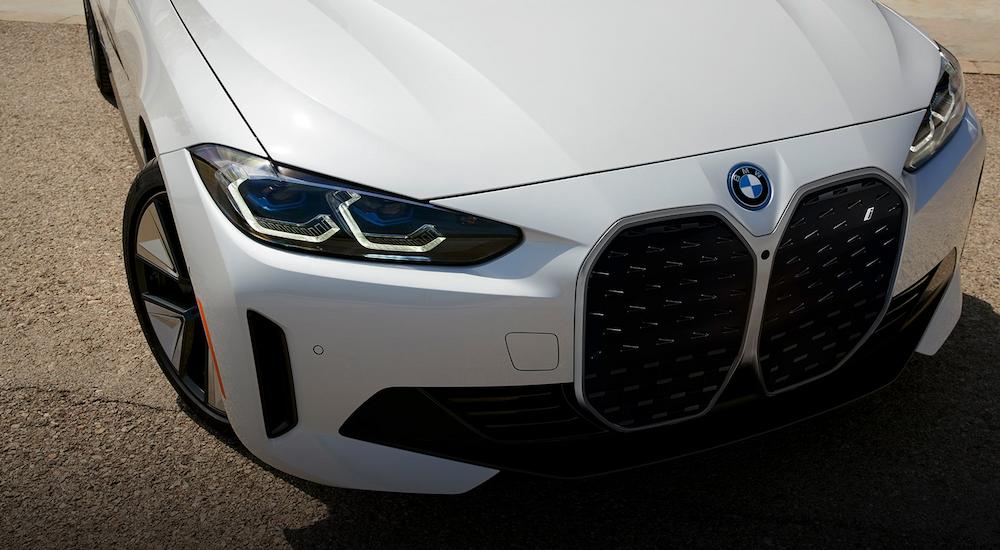
A Unique Soundtrack
Now, back to that silent powertrain. It poses a bit of a problem. Most drivers are well-trained to associate speed with noise. Take the sound away, and it’s easy to forget how fast you’re driving! Acceleration becomes nauseating without the audible affirmation of what’s going on. Everybody’s taking a different approach to this problem. Some manufacturers are trying to replicate real engine noises; BMW has turned to the pros.
The BMW i4 features a delightfully futuristic soundtrack, featuring a Shepard tone that imparts a sense of urgency through an illusion of rising pitch without actually changing the tone. In plain English, it’s a sound that naturally excites, something completely unlike anything we’ve seen in a car before, and composed by none other than Hans Zimmer! Renowned for highly acclaimed film scores and an iconic minimalist composition style well-suited to “designing the sound of the future,” Zimmer believes BMW’s audience is willing to explore something a little out of the ordinary like this. If drivers like you choose to make this a hit, it’ll be far from the last time that world-famous composers put their name on an acceleration note.
BMW’s Tech Showcase
When anyone and everyone can have heated leather seats, “luxury” starts to become less about what a car has and more about what it does. As such, the equipment and amenities of the i4 are distributed across intertwined arenas of general comfort, driver assistance, and connectivity technology. In typical BMW fashion, the system is understated as a whole, but upon closer inspection, it possesses such depth as to overwhelm, so only the highlights get to be featured here.
General Comfort – Climate Control
Automatic, dual-zone climate control is nothing new, even in the midsize sedan segment. There are two things, though, which set the i4 apart from the norm, and the first is pretty simple––rear seat climate control in a midsize sedan! Rear passengers might not get all the legroom in the world, but they’ve got their own temperature settings and vents. It’s nothing fancy, but it is a point of attention to detail.
Second and more significant is the coordinated intelligence of the automatic climate control system. This system will operate the heated steering wheel and heated front seats in conjunction with the HVAC for optimized full-body comfort. The fewer adjustments a driver has to make to stay comfortable, the better!
Driver Assistance – It Keeps Getting Easier!
The list of available driver-assistance features on the BMW i4 is enough to warrant its own post. Among the most interesting of these are the following:
- A capacitive steering wheel, so the car can sense when your hand is on the wheel! This means it won’t prompt you to turn the wheel just to prove that you’re paying attention, which is an annoying side effect in less-sophisticated cars with “self-driving” technology.
- “Icon Adaptive LED headlights with Laserlight” is a lighting system that uses laser-activated phosphorus lamps to generate remarkably bright light with a tremendous illuminating distance (claimed to be nearly half a mile)! This system uses cameras, sensors, and navigation data to identify pedestrians and animals, angle its beam towards curves, and automatically reduce the brightness perceived by oncoming traffic.
- Level 2 Automated Driving, courtesy of features such as “Steering and Lane Control Assistance with Traffic Jam Assistance,” means the i4 can handle highway gridlock at up to 40 mph without your input and will perform lane changes if prompted by the driver (accomplished by activating the turn signal).
- The Parking Assistance Package supplies drivers with an automated parking assistant for uncomfortable reversing situations and a 3D surround-view camera system to help you act as your own spotter during tight maneuvers.
Taken together, the BMW i4’s available assistance systems do a lot to reduce the stress of driving, freeing your headspace to focus on more important things than parallel parking.
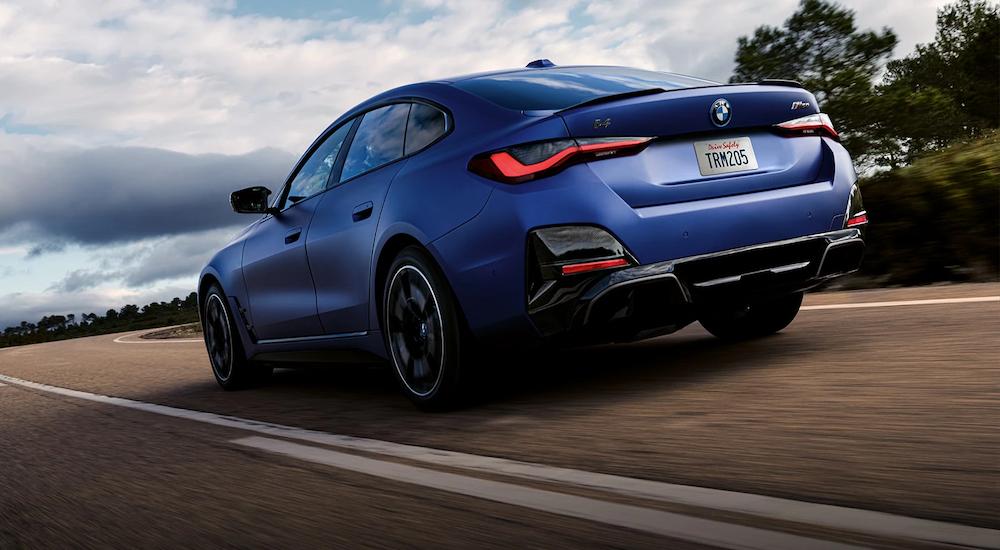
Connectivity – The Car as an Extension of the Self
Last but not least, we have come to the almost brand-new iDrive 8 infotainment system. Infotainment has become as integral to the modern automobile as climate control (in many cars, it operates the climate control). BMW is renowned for consistently providing one of the best infotainment systems in the business, and it continues to improve with each generation. Though iDrive 8 has its drawbacks, it also offers nearly every conceivable benefit.
In the i4, the new BMW Curved Display––a huge driver-focused screen with two separate displays, each more than a foot across––provides the interface for iDrive 8. The right display is touch-sensitive, but this might not be ideal for accessing the several dozen icons on the home screen. Fortunately, BMW’s signature control knob remains, complete with a capacitive touchpad for sketching letters in place of using a keyboard (if you must).
But that’s not all! The BMW Intelligent Personal Assistant allows voice commands to interact with apps like the navigation system. A futuristic gesture control system provides the driver with a silent method to bypass physical controls while feeling like a wizard. Basically, the only thing you’re stuck with is the infotainment operating system itself––how you interact with it is entirely up to you.
Beyond this, wireless everything–––Apple CarPlay, Android Auto, and phone charging––is the order of the day. Ambient lighting sets the mood to precisely “you.” The gauge cluster and optional HUD are highly configurable; the HUD can even be used to navigate changing radio stations without ever taking your eyes off the road! The sum of all this is a driving experience that is exactly as “tech connected” and automated as you want it to be, allowing the i4 to become an extension of yourself.
EVs: Luxury of the Future
The BMW i4 is a fascinating model, one of the most understated electric designs on the market, priced comparably to its gas-powered stablemates and equipped to challenge any competitor. With a bold take on the sounds an EV should make, one of the most diverse control schemes I’ve ever heard of, and deliciously capable Level 2 automated driving, the feature list is comprehensive but still fails to capture the lengths that BMW has gone so that the i4 would be a genuine luxury car. BMW manages to capture such an overwhelming amount of detail in such a neat, understated package it almost defies understanding. In more ways than one, the i4 certainly lives up to the legacy of the Ultimate Driving Machine.
